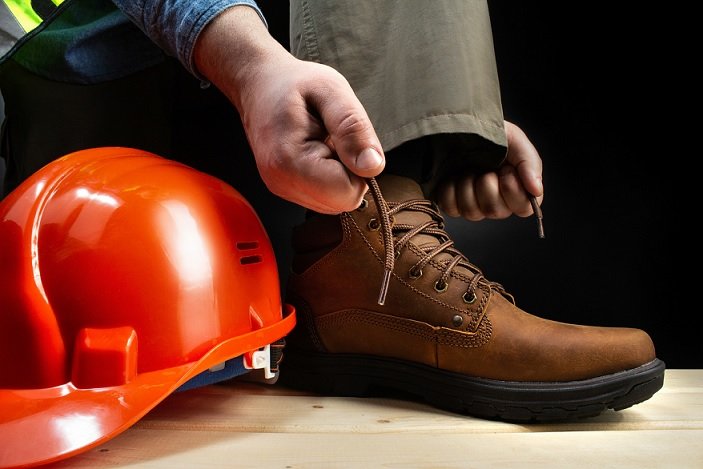In today’s industrial and construction landscapes, prioritizing worker safety is paramount. Among the various safety measures and equipment employed, safety shoes stand out as a crucial component. These specialized footwear not only protect workers from potential hazards but also enhance their overall comfort and productivity. This comprehensive article delves into the importance of safety shoes, their types, regulations, and benefits, providing a thorough understanding of why they are indispensable in various work environments.
Importance of Safety Shoes
Safety shoes are designed to safeguard workers from a multitude of workplace hazards. Whether it’s protection against heavy objects, sharp materials, electrical shocks, or slippery surfaces, these shoes are engineered to mitigate risks and reduce the likelihood of injuries. By providing a sturdy shield for the feet and ankles, safety shoes play a pivotal role in maintaining occupational safety standards and ensuring workers’ well-being.
Types of Safety Shoes
- Steel-Toe Boots: These are perhaps the most common type, featuring a reinforced toe cap typically made of steel. They offer robust protection against impact and compression hazards.
- Composite-Toe Boots: Similar in function to steel-toe boots but made from non-metal materials like Kevlar, fiberglass, or carbon fiber. They are lightweight and offer excellent protection from impact.
- Electrical Hazard (EH) Rated Boots: Designed to protect against electrical shocks by providing insulation. EH-rated boots are essential for workers in environments where electrical hazards are prevalent.
- Slip-Resistant Boots: These shoes are equipped with outsoles that provide traction on slippery surfaces, reducing the risk of slips and falls in workplaces prone to wet or oily conditions.
- Puncture-Resistant Boots: Incorporating a midsole plate designed to protect against puncture wounds from sharp objects such as nails or debris.
Regulatory Standards
Regulatory bodies such as OSHA (Occupational Safety and Health Administration) in the United States and similar organizations worldwide mandate specific standards for safety footwear. Compliance with these standards ensures that safety meet minimum requirements for protection, durability, and performance. Understanding these standards is crucial for employers and workers alike to ensure the effectiveness of safety in safeguarding against workplace hazards.
Benefits of Safety Shoes
Investing in quality safety shoes yields numerous benefits beyond compliance with regulations:
- Injury Prevention: By providing protection against common workplace hazards, shoes reduce the risk of foot injuries such as fractures, punctures, and crush injuries.
- Enhanced Comfort: Modern safety footwear is designed with ergonomic principles in mind, ensuring comfort during long work hours. Features like cushioned insoles and breathable materials enhance wearer satisfaction and productivity.
- Long-Term Cost Savings: While the initial cost of safety shoes may be higher than regular footwear, they contribute to long-term cost savings by preventing injuries and reducing downtime due to accidents.
- Boosted Employee Morale: Providing adequate safety equipment demonstrates a commitment to employee welfare, fostering a positive work environment and boosting morale.
Choosing the Right Safety Shoes
Selecting the appropriate safety shoes involves considering several factors:
- Work Environment: Identify specific hazards prevalent in the workplace.
- Comfort and Fit: Ensure the shoes are comfortable and provide adequate support for the intended tasks.
- Durability: Opt for shoes made from high-quality materials that can withstand the rigors of the job.
Consulting with safety officers and footwear experts can help in making informed decisions tailored to the unique needs of different industries and job roles.
Conclusion
Safety shoes are indispensable in ensuring workplace safety across various industries. From construction sites to manufacturing facilities, these shoes not only protect against injuries but also contribute to overall worker well-being and productivity. Understanding the types, regulatory standards, and benefits associated with safety shoes empowers employers and workers to make informed choices that prioritize safety. By investing in quality safety footwear and promoting a culture of safety, organizations can create safer work environments and mitigate the human and financial costs associated with workplace injuries.
Implementing robust safety protocols that include the use of appropriate safety shoes is a proactive step towards fostering a safer and more productive workforce, aligning with global standards for occupational health and safety.
In conclusion, safety shoes are not merely a requirement but a proactive investment in the safety and welfare of workers, ensuring they can perform their jobs effectively and safely in any challenging work environment.
